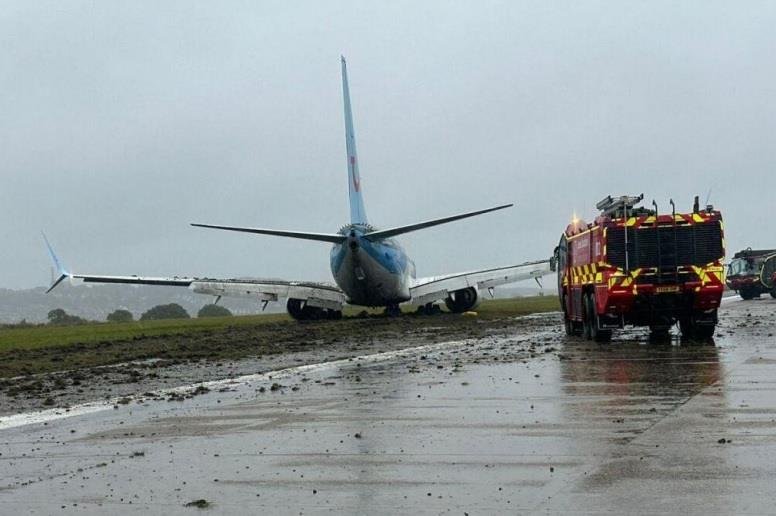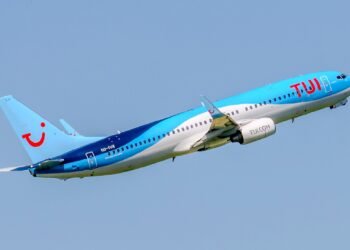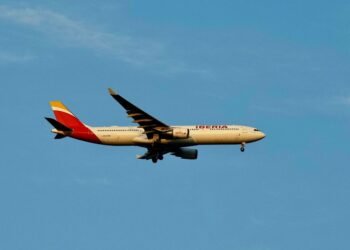Pilots of a Boeing 737-800 involved in a landing excursion in wet conditions at Leeds-Bradford could have kept the jet on the runway, investigators believe, but might have been influenced by unexpected juddering from a nose-wheel bearing failure.
The TUI Airways aircraft had been arriving from Corfu, in stormy weather, on 20 October last year.
Its crew conducted an ILS approach to runway 14, selecting maximum autobrake, after confirming crosswinds from the left were within limits.
Using right rudder to de-crab, the captain landed the jet in the touchdown zone, with autobrake and reverse-thrust activating normally.
As the captain reduced right-rudder input the aircraft began to yaw left, and right rudder was re-applied.
But the full range of rudder was “not used to correct the drift”, says the UK Air Accidents Investigation Branch, because the crew felt a “significant judder” when right-rudder was applied.
Autobrake was disconnected at 107kt – eliminating wheel braking for…






